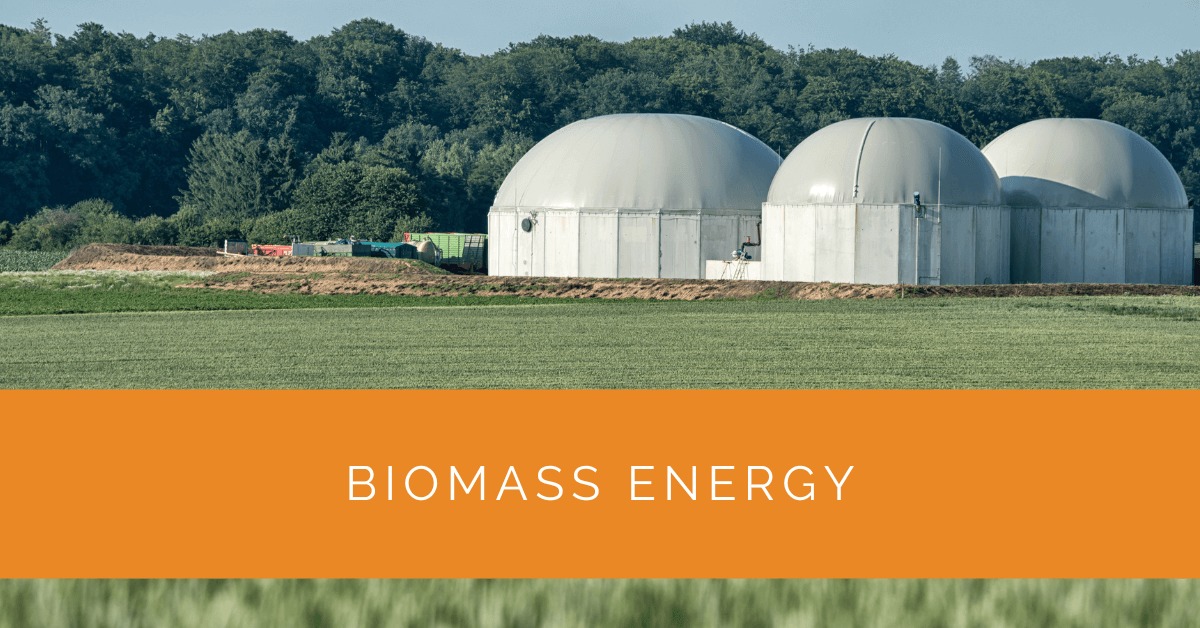Biomass energy is a renewable energy source derived from organic matter, such as plants, crops, and agricultural residues. This article explores the fascinating world of biomass energy, delving into its benefits, conversion processes, and various applications. Discover how biomass is revolutionizing the energy industry as an alternative to fossil fuels.
Contents
Key Takeaways
- Biomass energy offers a sustainable and renewable alternative to fossil fuels, harnessing the power of organic matter, such as energy crops, organic waste, and biomass feedstock.
- Conversion processes such as biofuel production, combustion, gasification, and anaerobic digestion enable the efficient conversion of biomass into electricity, heat, and transportation fuels.
- Biomass energy provides environmental benefits, contributes to the circular economy, enhances energy independence, and finds applications in power generation, heating, industrial processes, and transportation, paving the way for a greener and more sustainable future.
Types of Biomass
Energy Crops: Unleashing the Potential
Energy crops play a crucial role in biomass energy production. These dedicated crops, such as switchgrass and miscanthus, are grown specifically for their energy content. They offer a sustainable and renewable source of biomass feedstock with high energy yields. Energy crops also contribute to environmental conservation by improving soil health and reducing erosion. Additionally, they can be cultivated on marginal lands, minimizing competition with food crops. The cultivation of energy crops supports local economies and enhances energy security by reducing reliance on imported fossil fuels.
Organic Matter: Unlocking Hidden Energy
Organic waste and agricultural residues hold tremendous energy potential. By diverting these materials from landfills and using them as biomass feedstock, we can transform waste into a valuable energy resource. Crop residues, such as corn stover, wheat straw, food waste, and animal manure can be converted into biogas through anaerobic digestion. This process generates renewable energy and helps reduce greenhouse gas emissions from waste decomposition. Moreover, utilizing organic matter as biomass feedstock contributes to waste management, mitigates odors, and reduces the strain on landfill capacities.
Biomass Feedstock: A Versatile Resource
Biomass feedstock encompasses a wide range of materials suitable for energy production. Wood chips, sawdust, and forestry residues constitute woody biomass, widely used in biomass power plants and heating systems. Agricultural residues, such as rice husks and sugarcane bagasse, provide an abundant source of biomass feedstock, particularly in agricultural regions. As mentioned earlier, dedicated energy crops offer a specialized biomass feedstock option. The selection of biomass feedstock depends on factors such as availability, energy content, and the specific conversion process employed.

Conversion Processes
Biofuel Production: Driving Towards a Sustainable Future
Biofuels derived from biomass offer a renewable alternative to traditional fossil fuels. The production of biofuels involves various conversion processes, including biochemical and thermochemical pathways. Biochemical processes, such as fermentation and enzymatic hydrolysis, produce bioethanol from starch and sugars found in biomass feedstock. Thermochemical processes, such as pyrolysis and gasification, convert biomass into bio-oil, syngas, and biochar. These intermediate products can be refined into biodiesel, biogasoline, and other advanced biofuels. The utilization of biofuels in transportation not only reduces greenhouse gas emissions but also enhances energy security by diversifying fuel sources.
Combustion and Gasification: Igniting Biomass’s Potential
Combustion and gasification are two key processes used to convert biomass into energy. Combustion involves directly burning biomass feedstock to generate heat, which can be used for various applications, including electricity generation, heating, and industrial processes. Biomass power plants employ combustion technologies such as stoker and fluidized bed boilers to produce steam, which drives turbines to generate electricity. On the other hand, gasification converts biomass into a combustible gas known as syngas. Syngas can be used for electricity and heat generation or further processed to produce chemicals and transportation fuels. Gasification offers higher energy efficiency and lower emissions than traditional combustion methods.
Biogas and Anaerobic Digestion: Harnessing Nature’s Digestive Powers
Anaerobic digestion is a fascinating process that transforms organic matter into biogas through bacterial decomposition. This process occurs in the absence of oxygen and involves several stages: hydrolysis, acidogenesis, acetogenesis, and methanogenesis. During anaerobic digestion, complex organic compounds are broken down into simpler compounds, releasing methane-rich biogas as a byproduct. Biogas, primarily composed of methane and carbon dioxide, can be utilized for various applications, including electricity and heat generation, cooking, and transportation. Anaerobic digestion produces renewable energy and provides a solution for organic waste management, reducing methane emissions from landfills and wastewater treatment plants.
Benefits of Biomass Energy
Environmental Advantages: Embracing Clean and Sustainable Energy
Biomass energy offers numerous environmental benefits. Compared to fossil fuels, biomass combustion and biofuel production result in lower net carbon dioxide emissions. This is because the carbon released during biomass combustion is part of a closed carbon cycle, where plants absorb carbon dioxide through photosynthesis. Additionally, the use of biomass energy contributes to the reduction of greenhouse gas emissions, mitigating the impacts of climate change. Biomass promotes sustainable land use practices, as energy crops can be cultivated on marginal lands without compromising food production.
Circular Economy: Closing the Loop
Biomass energy plays a vital role in the circular economy by recycling organic waste and agricultural residues. Through anaerobic digestion, biomass feedstock is transformed into biogas, which generates renewable energy and helps in waste management. By diverting organic waste from landfills, methane emission, a potent greenhouse gas, is minimized. Moreover, the byproducts of anaerobic digestion, such as digestate, can be used as nutrient-rich fertilizers, closing the nutrient loop and reducing the need for synthetic fertilizers. The circular economy approach to biomass energy production promotes resource efficiency, waste reduction, and environmental sustainability.
Energy Independence: Reducing Reliance on Fossil Fuels
Biomass energy provides an opportunity to decrease dependence on fossil fuels and enhance energy security. Countries can reduce their reliance on imported fossil fuels by utilizing locally available biomass feedstock, ensuring a stable and secure energy supply. Biomass energy production can be decentralized, empowering local communities and stimulating rural development. Furthermore, biomass energy offers an alternative source of revenue for farmers and landowners, contributing to a more resilient and diversified energy portfolio.
Bioenergy: Harnessing Biomass’s Full Potential
Bioenergy, derived from biomass, plays a significant role in the renewable energy landscape. It encompasses using biomass feedstock for heat, power, and biofuel production. Bioenergy offers several advantages, including its versatility, carbon neutrality, and potential for energy storage. Using biomass for bioenergy purposes can reduce reliance on fossil fuels and promote a sustainable energy transition.

Applications and Usage
Power Generation: Energizing the Grid
Biomass power generation plays a significant role in meeting electricity demands. Biomass power plants employ various technologies, such as steam turbines and gasifiers, to convert biomass feedstock into electricity. These plants utilize the heat generated from biomass combustion or gasification to produce steam, which drives turbines connected to generators. Biomass power generation offers a reliable and dispatchable source of renewable electricity, contributing to the diversification of the energy mix and supporting grid stability. Additionally, combined heat and power (CHP) systems in biomass power plants enable simultaneous electricity and heat production, maximizing energy efficiency.
Heating and Cogeneration: Warming Homes and Industries
Biomass-based heating systems provide an efficient and sustainable solution for residential, commercial, and industrial heating. Biomass boilers and pellet stoves utilize biomass feedstock, such as wood chips or pellets, to generate heat. These systems offer advantages such as lower greenhouse gas emissions, local sourcing of fuel, and compatibility with existing heating infrastructure. In cogeneration systems, biomass heat is combined with electricity generation, providing thermal energy for space heating or industrial processes and electricity for on-site use or export to the grid. Biomass-based heating and cogeneration systems contribute to energy efficiency, reduce reliance on fossil fuels, and promote a greener and more sustainable heating sector.
Industrial Processes: Greening Manufacturing
Biomass energy finds applications in various industries, making manufacturing processes more sustainable and environmentally friendly. Industrial boilers, kilns, and furnaces can be fueled by biomass, reducing the reliance on fossil fuels and lowering carbon emissions. By utilizing biomass as a primary energy source, industries can contribute to reducing greenhouse gas emissions and align their operations with sustainable practices. Using biomass also offers the potential for cost savings, as biomass feedstock can often be sourced locally, reducing transportation costs associated with fossil fuels. Moreover, the ash generated from biomass combustion can be recycled and used as a nutrient-rich soil amendment, closing the loop in the production cycle.
Transportation: Fuelling the Future
Biomass-based fuels have emerged as a promising solution for greening the transportation sector. Biofuels derived from biomass feedstock, such as ethanol and biodiesel, offer a renewable alternative to conventional fossil fuels. They can be blended with gasoline and diesel or used as standalone fuels, reducing greenhouse gas emissions and improving air quality. Additionally, the production and utilization of biofuels stimulate rural economies by creating opportunities for farmers and biofuel production facilities. Ongoing research and development efforts are focused on advancing biofuel technologies, exploring new feedstock sources, and improving the efficiency of conversion processes. The integration of biomass-based fuels in transportation reduces the carbon footprint, enhances energy security, and fosters a more sustainable and resilient transportation system.
Expert Insights From Our Solar Panel Installers About Biomass Energy
Biomass energy is transforming the renewable energy landscape by turning organic waste into valuable energy resources. This process not only reduces landfill waste but also generates clean energy, making it a win-win for sustainability.
Senior Renewable Energy Engineer
Utilizing biomass for power generation and heating significantly reduces greenhouse gas emissions compared to fossil fuels. By adopting these technologies, we can move towards a more sustainable and eco-friendly future.
Biomass Energy Specialist
Biomass energy offers a versatile solution for various applications, from power generation to industrial processes. It’s a reliable and renewable source of energy that supports local economies and promotes energy independence.
Energy Solutions Consultant
Conclusion
Biomass energy holds immense potential as a renewable and sustainable energy source. By harnessing the power of organic matter, we can reduce our reliance on fossil fuels, mitigate greenhouse gas emissions, and promote a greener future. The diverse types of biomass, ranging from energy crops to organic waste, offer a versatile feedstock for energy production. Conversion processes, such as biofuel production, combustion, gasification, and anaerobic digestion, enable the efficient transformation of biomass into electricity, heat, and transportation fuels. The numerous benefits of biomass energy, including environmental advantages, circular economy principles, and enhanced energy independence, make it a crucial component of our transition toward a cleaner and more sustainable energy landscape. By embracing biomass energy, we can balance energy needs, economic growth, and environmental preservation harmoniously. Let us embrace this renewable power and pave the way for a greener future.
About the Author
Solar Panels Network USA stands at the forefront of solar energy solutions, driven by a team of seasoned solar engineers and energy consultants. With over decades of experience in delivering high-quality solar installations and maintenance, we are committed to promoting sustainable energy through customer-centric, tailored solutions. Our articles reflect this commitment, crafted collaboratively by experts to provide accurate, up-to-date insights into solar technology, ensuring our readers are well-informed and empowered in their solar energy decisions.

